For this week’s critical play I played Zero Time Dilemma, a mystery adventure game released by Spike Chunsoft in 2016 that centers around 9 people, separated into 3 teams, that must survive a life-or-death game where their memories are continually wiped every 90 minutes, and escape is only possible if 6 of them die.
Puzzles in Zero Time Dilemma are set up in an escape room format, items are scattered around the space, which give hints to unlock other items and hints, eventually culminating in opening a final door to escape. Most of the interaction occurs through a clicking/interaction system, where by clicking on various locations and objects within the space, it will activate hints or puzzles, or collect the object.
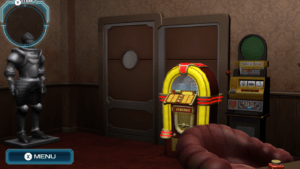
The objects you collect can be placed in your hand, which affect how you might interact with other objects – for example, if you pick up a screwdriver and place it in your hand, clicking on certain screws will unscrew them. Each room is themed differently and explores a number of different puzzle types, but the main strength of its puzzles lie in the creative combination of different items and scenarios. Items are often used in ways outside of how you might expect to use them, forcing you to think outside of the box and try out multiple different solutions to a given problem, such as using a coin as a substitute for a screwdriver or breaking through a wooden box by lighting a fire with a set of matches and immediately putting it out with a bottle of water. This is combined with the puzzles often having a non-linear structure – items or notes collected early on can often be the solution to a completely different portion of the puzzle that has yet to be revealed, keeping you constantly guessing and leading to a number of great “aha!” moments where a clue finally slots into place, creating a sense of fun for both discovery and challenge.
However, there were a few core issues that took away from the experience. First, the rule of maintaining consistency between puzzles was occasionally broken, where certain interactions that would work in one puzzle would then stop working in another puzzle, or an interaction that you would expect to go one way would actually not be possible. Second, sometimes the non-linear structure would be a bit too confusing, where it would be very unclear if you had already obtained all the hints for a particular puzzle, leading to moments where it felt like an answer was ambiguous. One example of this came in the form of a 4 -letter keycode, with an accompanying hint that matched circled numbers on a roulette board to the letters S, I, N, P. I figured the code would be SPIN, but the way that they were presented in numerical order yielded the code SINP instead, making it feel like more of a guess than a straightforward solution. The issue came in the fact that I would end up coming across the hint that gave the correct solution to the puzzle, but by then I had already guessed my way into solving it.
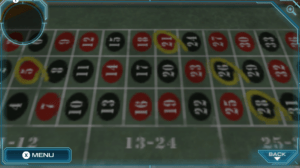

Compounding to this issue, because the game forces you into a single perspective, it’s not particular clear which items can be interacted with or which are background items, especially if they are somewhat far away, leading to instances where I would essentially be clicking all over the place in hopes that I might click onto something relevant. Finally, there was no real weight or punishment to failing a particular puzzle – for example, failing to cut the correct wire for a bomb puzzle and having it explode would be played off as the player character ‘hallucinating’ a bad ending, and the gameplay would immediately proceed from the last point of failure.
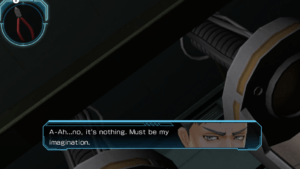
I don’t think a full reset to the beginning of the puzzle would be very interesting, so I would’ve liked to see something like differing outcomes or more difficult pathways that open up in the event that a player fails a puzzle.
The other gameplay segment in Zero Time Dilemma outside of the puzzles are the Decision Games, in which the player is forced to choose an option in a moral dilemma deciding between who lives and dies. One design decision that I really love is that the set pieces for these Decision Games are usually introduced earlier on during the puzzle sequence. One example of a perfect lead-in to a decision game is the Library escape room, solved by 3 individuals designated as “Q-Team”. Over the course of the puzzle, the player collects a gun, a crossbow, and a grenade launcher, all of which are used to activate certain portions of the room or unlock new hints. However, at the conclusion of the puzzle, it is revealed that only one more person needs to die in order to escape, and those weapons are immediately used in a 3-person standoff, setting up the decision game where you must decide who to shoot.
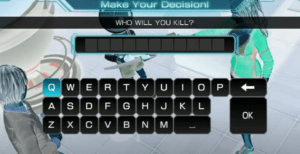
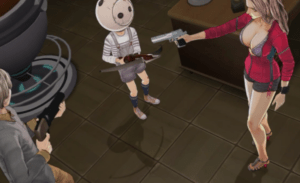
This keeps the player wondering – will this particular object have relevance later? Will it be used in the decision game? What will the next decision game be and what choice should I make? It creates a wonderful mental slow burn where you try to guess what the decision game might be, but even if you do, you are helpless to stop it.


